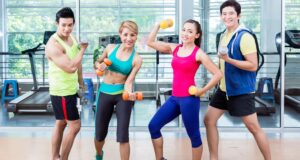What Is Functional Training?
When performed by a physiotherapist or occupational therapist, functional training is a kind of rehabilitation. It focuses on re-establishing the strength and normal function of the musculoskeletal system to make daily tasks easier for patients. Core training and strengthening may be included in functional training, since strong core muscles are necessary for proper posture and mobility.
Functional training aims to enhance activities of daily living (sometimes referred to as ADL). ADLs include personal care tasks such as bathing or clothing, along with housekeeping or home maintenance chores such as cleaning, putting dishes away or doing yard work. They can also include work-related activities and vary from one individual to the next. While everyone must do certain fundamental tasks, such as getting out of bed and dressing, most of us have our own habits and obligations. As a result, your everyday activities will often differ from your next-door neighbour, closest friend or colleague.
When your physiotherapist creates your functional training plan, he or she will take into account the injury or condition restricting your physical activities, your general health and strength, and the activities necessary to function in daily life. Your therapy will be tailored to your specific injury or condition (and your strengths). Your therapist will design an exercise regimen for you which addresses each problem and aims to make it easier for you to execute the tasks you want and need to do.
How Functional Training Works
Exercise, by definition, requires movement; however, many individuals have lost their capacity to move properly. Sitting at workstations in front of computers results in muscular imbalances, poor posture and inefficient exercise movement patterns. Consequently, you’ll receive less from your exercises (and injury is frequent). The purpose of functional workouts is to move the body in various angles and planes of motion. Numerous exercises in functional training are based on basic movements such as running, jumping, climbing, crawling, twisting, shifting, pushing and pulling.
Bones, muscles, connective tissue, the neurological system and joints comprise the human body. True functional movement requires the body to adapt to a wide variety of stresses, loads, and difficulties in order to remain fluid in motion. Both physical strength and mental processing in the brain are required to coordinate and manage this strength. Neuroscientists have shown that the enzymes generated in the brain while learning a new skill boost the brain’s function and processing ability. Acquiring a new talent engages significant brain parts that may remain dormant in daily living.
Due to the realities of time constraints, it’s essential to maximize the effectiveness of your workout regimens. As a result, functional training benefits include doing full-body exercises which also challenge your brain. It is recommended that one should engage in some type of functional exercise, even if it is just a couple of hours each week; put down your phone; move away from the internet; and avoid the dull machines and isolated exercises that most people continue to perform.
One simple recommendation would be to master certain bodyweight exercises and then add resistance using dumbbells, kettlebells, suspension trainers (TRX) and others. Your local sports physiotherapist can help you with developing a brief and basic training plan that focuses on performance enhancement while minimizing injury risk.
3 Functional Training Exercises
 Here are three key exercises that will train the majority of your body’s muscles while helping you to remain functional.
Here are three key exercises that will train the majority of your body’s muscles while helping you to remain functional.
- Squat
A squat is useful regardless of whether you’re an athlete or a stay-at-home mom (or both). It requires almost every muscle in your legs, hips and back to be strong.
- Overhead Press
This mimics reaching for something on a high shelf, or stowing your luggage in an airplane’s overhead bin. It demands shoulder and arm strength. You may use a medicine ball or kettlebell to make it more useful.
- Pushup
This can assist senior citizens in rising from the floor after a fall, or someone younger who has to push goods at work. It takes considerable shoulder, arm and chest power but also needs you to engage your core.
For more information on the best functional training physiotherapy in the Langley area, visit fraserlifephysio.ca or call us at (778) 278-4755 today.
< Previous | Home | Next >

